Some more, including an "Ew!" moment
Mar 23, 2019 15:59:26 #
We had a brief vacation in New Jersey during the summer to visit the wife’s family. It was rainy the whole time, unfortunately, so my only window for escaping was very brief. I managed to get this Mirid plant bug that is shown in the first picture. It is from the genus Neurocolpus, and several of them were on the flowers of an unknown Legume.
I also came across several Ailanthus webworm moths (Atteva aurea), and one is shown in the next picture. Ailanthus altissima, or ‘tree of heaven’ is an introduced species that has become a bit of a pest. Very common farther east, but we have them here as well. I have not seen the lovely little moth where I live, however.
Back at home, I had an outing in a park where I ventured far off trail into the woods. There, I came upon this female scorpionfly (Panorpa) feeding on bird poo. Scorpionflies are carnivores, but I suspect they do most of their feeding on dead insects. The bird droppings were chock full of goodies. After several minutes of energetic probing, she dragged out the carcass of a rove beetle. Mmm-mmm.
I also came across several Ailanthus webworm moths (Atteva aurea), and one is shown in the next picture. Ailanthus altissima, or ‘tree of heaven’ is an introduced species that has become a bit of a pest. Very common farther east, but we have them here as well. I have not seen the lovely little moth where I live, however.
Back at home, I had an outing in a park where I ventured far off trail into the woods. There, I came upon this female scorpionfly (Panorpa) feeding on bird poo. Scorpionflies are carnivores, but I suspect they do most of their feeding on dead insects. The bird droppings were chock full of goodies. After several minutes of energetic probing, she dragged out the carcass of a rove beetle. Mmm-mmm.
Mirid bug
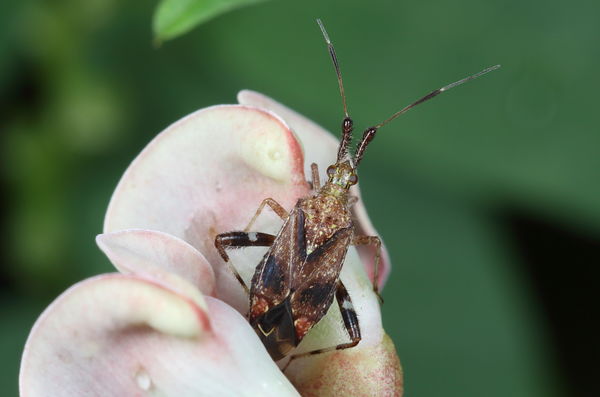
(Download)
Ailanthus webworm moth
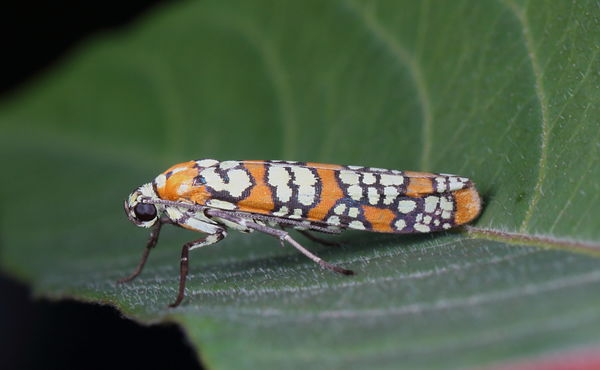
(Download)
Scorpionfly feeding on bird dropping
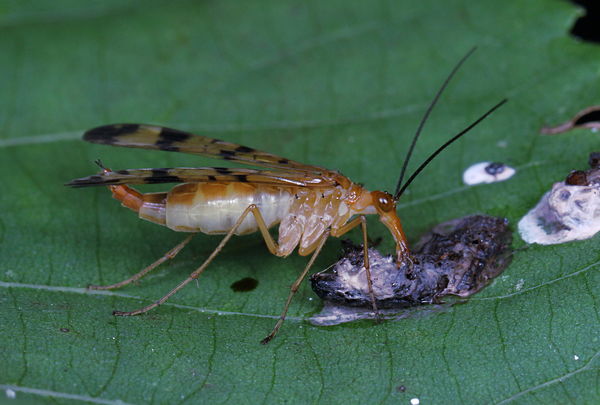
(Download)
What is she dragging out?
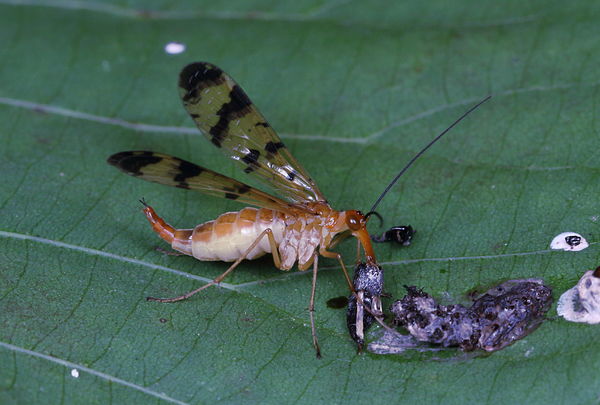
(Download)
It's a rove beetle! Yum!
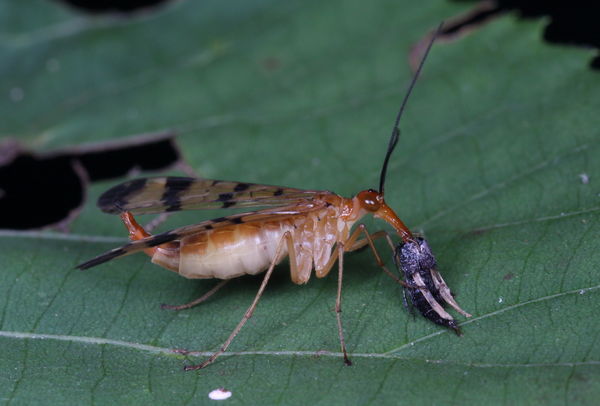
(Download)
Mar 23, 2019 16:25:22 #
Mar 23, 2019 17:04:05 #
Mar 23, 2019 18:17:31 #
Mar 23, 2019 19:18:37 #
Mar 23, 2019 19:23:31 #
Excellent, Mark. Great images. I was looking at a photo today that I took last summer of a Red-spotted purple feeding on an owl casting.
Ailanthus altisima is the preferred host plant for Spotted lanternfly, Lycorma delicatula, an invasive species that has become a serious threat to the fruit crop here. My boss had a brilliant idea - "we can plant a bunch more Ailanthus altisima and then when the bugs go there, we just blast them with pesticide!" I told him I had a better idea. How about we pull out the existing Ailanthus altisima and deprive the Spotted lanternfly of its larval host plant?
Mike
Ailanthus altisima is the preferred host plant for Spotted lanternfly, Lycorma delicatula, an invasive species that has become a serious threat to the fruit crop here. My boss had a brilliant idea - "we can plant a bunch more Ailanthus altisima and then when the bugs go there, we just blast them with pesticide!" I told him I had a better idea. How about we pull out the existing Ailanthus altisima and deprive the Spotted lanternfly of its larval host plant?

Mike
Mar 23, 2019 20:51:49 #
Blenheim Orange wrote:
Ailanthus altisima is the preferred host plant for Spotted lanternfly...
Mike
Mike
I have certainly heard of the spotted lanternfly. A beautiful insect, but not a welcome one.
Mar 24, 2019 09:40:33 #
Great set Mark! Wonderful detail in every shot. I enjoyed it poo and all.
-Doc
-Doc
Mar 24, 2019 09:52:42 #
Blenheim Orange wrote:
Excellent, Mark. Great images. I was looking at a ... (show quote)
Once established, Ailanthus is nearly impossible to eradiicate. Cut the tree, shoots appear. Cut a shoot, two appear. Offensive and hinders growth of native trees. Cynthia silk moth feeds on it. A non-native Giant Saturniid. And some plant bugs feed on it. Not much else. Foul smelling.
Bill
Mar 24, 2019 09:55:35 #
I really like the pretty moth, I used to see them in Spain sometimes.
Mar 24, 2019 09:59:36 #
Mark Sturtevant wrote:
We had a brief vacation in New Jersey during the s... (show quote)
Your use of she means you know of the peculiar male appendage.
Another bugs' s, (fill in blank space), is her bread and butter. Old plumber joke.
Bill
Mar 24, 2019 10:23:50 #
newtoyou wrote:
Once established, Ailanthus is nearly impossible to eradiicate. Cut the tree, shoots appear. Cut a shoot, two appear. Offensive and hinders growth of native trees. Cynthia silk moth feeds on it. A non-native Giant Saturniid. And some plant bugs feed on it. Not much else. Foul smelling.
Bill
Bill
In Berks County, PA where I came from Bill, we were ground zero for the Spotted Lanternfly (Lycorma delicatula). It came in from SE Asia and has been spreading from there. Groups are trying to eradicate the Ailanthus trees in the county because at some point in their life cycle they must feed and this tree. Cutting it is the worst thing you can do. As you pointed out it comes back manyfold. They use battery powered drills with a 3/8" bit, bore into the tree and the next group puts Roundup in the hole. Come back in one month and they can be pulled out....dead!
-Doc
Mar 24, 2019 11:59:24 #
Mar 24, 2019 17:28:38 #
Mar 24, 2019 17:37:55 #
I was just doing some research on the lanternfly in PA. I can hope it gets eradicated, but admit I would like to photograph one first. So it is on my list of 'goals' next time I drive thru that state. The wife needs to be willing to stop, however.
If you want to reply, then register here. Registration is free and your account is created instantly, so you can post right away.









